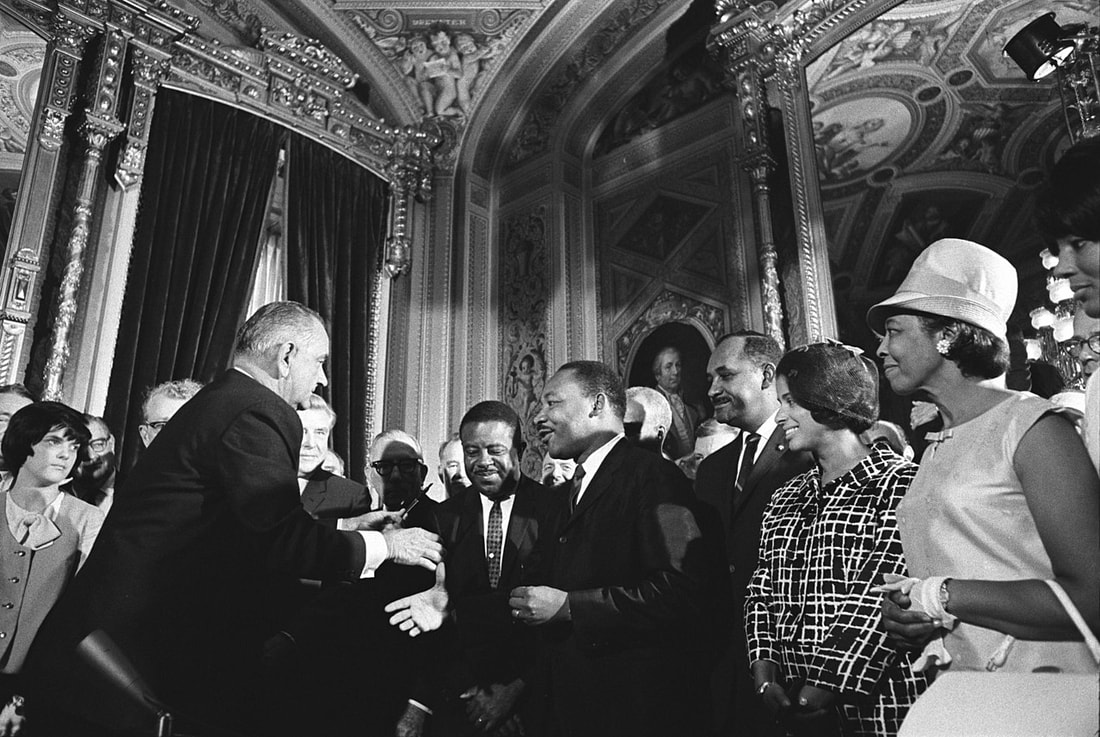 United States President Lyndon B. Johnson, Martin Luther King Jr., and Rosa Parks at the signing of the Voting Rights Act on August 6, 1965
United States President Lyndon B. Johnson, Martin Luther King Jr., and Rosa Parks at the signing of the Voting Rights Act on August 6, 1965 The act contains numerous provisions that regulate elections. The act's "general provisions" provide nationwide protections for voting rights. Section 2 is a general provision that prohibits every state and local government from imposing any voting law that results in discrimination against racial or language minorities. Other general provisions specifically outlaw literacy tests and similar devices that were historically used to disenfranchise racial minorities. The act also contains "special provisions" that apply to only certain jurisdictions. A core special provision is the Section 5 preclearance requirement, which prohibits certain jurisdictions from implementing any change affecting voting without receiving preapproval from the U.S. attorney general or the U.S. District Court for D.C. that the change does not discriminate against protected minorities. Another special provision requires jurisdictions containing significant language minority populations to provide bilingual ballots and other election materials.
Section 5 and most other special provisions apply to jurisdictions encompassed by the "coverage formula" prescribed in Section 4(b). The coverage formula was originally designed to encompass jurisdictions that engaged in egregious voting discrimination in 1965, and Congress updated the formula in 1970 and 1975. In Shelby County v. Holder (2013), the U.S. Supreme Court struck down the coverage formula as unconstitutional, reasoning that it was no longer responsive to current conditions. The court did not strike down Section 5, but without a coverage formula, Section 5 is unenforceable. The jurisdictions which had previously been covered by the coverage formula massively increased the rate of voter registration purges after the Shelby decision.
Research shows that the Act successfully and massively increased voter turnout and voter registrations, in particular among blacks. The Act has also been linked to concrete outcomes, such as greater public goods provision (such as public education) for areas with higher black population shares, and more members of Congress who vote for civil rights-related legislation.
 RSS Feed
RSS Feed